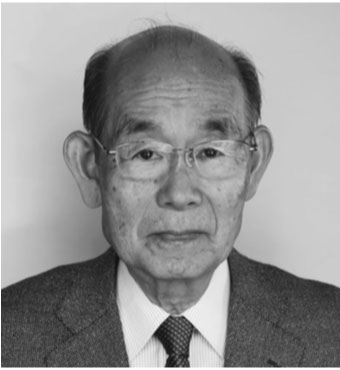 Dr. Kunihiko Fukushima graduated from the Department of Electronic Engineering, Faculty of Engineering, Kyoto University in 1958 and joined the Japan Broadcasting Corporation (NHK).
Dr. Kunihiko Fukushima graduated from the Department of Electronic Engineering, Faculty of Engineering, Kyoto University in 1958 and joined the Japan Broadcasting Corporation (NHK). Within NHK, he worked in its Technical Research Laboratories; Broadcasting Science Research Laboratories; and Science and Technology Research Laboratories.. In 1989, he became a professor in the Graduate School of Engineering Science, Osaka University. He retired from the university in 1999 and successively became a professor of The University of Electro-Communications; a professor at Tokyo University of Technology; and a visiting professor for Kansai University. Currently, he is senior research scientist at the Fuzzy Logic Systems Institute. In this unfettered position, he is continuing his research into the field of his expertise: neural networks. He participates in related research conferences, both in Japan and overseas, thereby deepening his relationships with younger researchers.
From 1965, Dr. Fukushima drove research into neural networks, which support todayfs artificial intelligence technology. He was a trailblazer in that he proposed Cognitron and Neocognitron, which form the basic architecture for deep learning. These have been configured based on the expected neurophysiological structure of the visual cortex of the human brain. He sorted out the characteristics of nerve cells in the brain, and proposed, from an engineering perspective, a unit structure made up of cascade connections of image filter banks. In order to realize a higher visual cortex function, he proposed Neocognitron, which extrapolates unit structures. The performance of Neocognitron was verified in the field of pattern recognition, such as recognition of handwritten characters. It was demonstrated that it performs sufficiently practically from an engineering perspective. Since the late 2000s, the structure of Neocognitron has become known as a neural network structure called gConvolution Neural Networkh (CNN) or gDeep CNNh (DCNN). Neocognitron has been making significant impacts not only on technology for pattern recognition of still images but also on processing of speech, video and text, including text written in a natural language.
Neocognitron has been a de facto standard since 2012, particularly in the field of image processing. Researchers and engineers both in Japan and overseas are building models and developing systems that deal with DCNN.
For the achievements mentioned above, he received two Best Paper Awards and an Achievement Award from the IEICE, of which he is now a fellow. He is also the recipient of numerous other awards, including the 2003 IEEE Neural Network Pioneer Award and the 2012 INNS Helmholtz Award, indicating that he is highly regarded both within and beyond Japan. He has also contributed to development of the IEICE. For example, he served as chair of the Technical Committee on Medical Electronics and Bioengineering.
As mentioned above, Dr. Fukushimafs contributions to the electronics, information and communication field are outstanding and we are convinced that he is eminently qualified to receive the Distinguished Achievement and Contributions Award.